What started as the private collection of a single individual evolved into one of the largest museums of natural history of the world. The museum is housed in a magnificent Neo-Romanesque building, designed by Alfred Waterhouse.
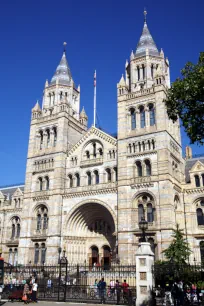
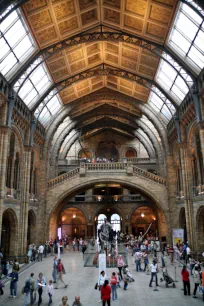
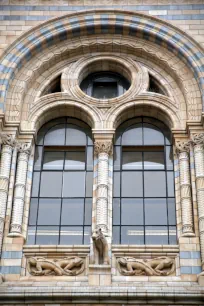
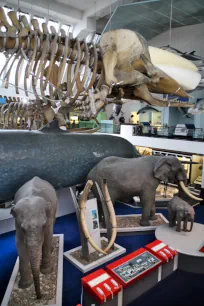
History of the Museum
Originally part of the British Museum, the Museum of Natural History began with a donation to the country of the collection of Sir Hans Sloane in 1753. Sloane, who was a physician, is said to have collected “natural curiosities”.
When a second collection by botanist Joseph Banks (who traveled with Captain James Cook) was added to Sloane’s collection, museum curators began to see a need for a separate location for these items.
A competition was held to determine the architect for the new building. The winner was Captain Francis Fowke who, unfortunately, died before he was able to complete his design. The honors then went to Alfred Waterhouse, who designed a German Romanesque structure that is now known as the Waterhouse Building.
The collections were moved to their new home in 1883, but it wasn’t until 1963 that these and additional collections were considered a museum in their own right.
Waterhouse Building
Considered one of the best examples of Neo-Romanesque architecture in Britain, the Waterhouse Building has become a London landmark. Its high-spired towers soar above much of the skyline and its huge grand facade – inspired by the basalt columns at Fingal’s Cave in western Scotland – is awe-inspiring.
The most modern Victorian techniques were used for its construction, resulting in an iron and steel framework. The framework is hidden by beautifully decorated terracotta facades. This structure is famous for its many terracotta features, and Waterhouse’s use of terracotta as a building material was groundbreaking in Great Britain.
Don’t forget to look up at the intricately painted ceiling panels in the Central Hall. Decorated with plants from all over the world, these gilded tiles all tell their own story.
The Exhibits
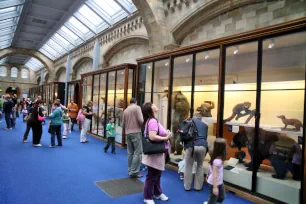
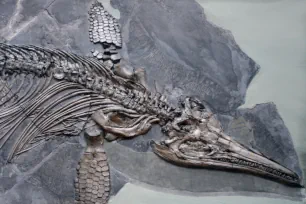
The museum’s enormous collection of artifacts and specimen (70 million+) covering life on earth can be overwhelming. The museum is divided into different color-coded zones, each focusing on a specific aspect of life on earth.
The collection of dinosaur skeletons is one of the museum’s biggest attractions. There are several life-sized models in the Dinosaur hall, and you’ll also encounter the skeleton of a Diplodocus in the central hall.
Also a favorite with visitors is a hall dedicated to large mammals, including an enormous model of a blue whale and several elephants. Other halls feature exhibitions on reptiles, fish, birds, ‘creepy crawlies’, and ecology.
Another zone of the museum focuses on geology. Here you can see the earth seen from outer space and a simulated earthquake and volcanic eruption. There’s also a large collection of minerals and stones.

